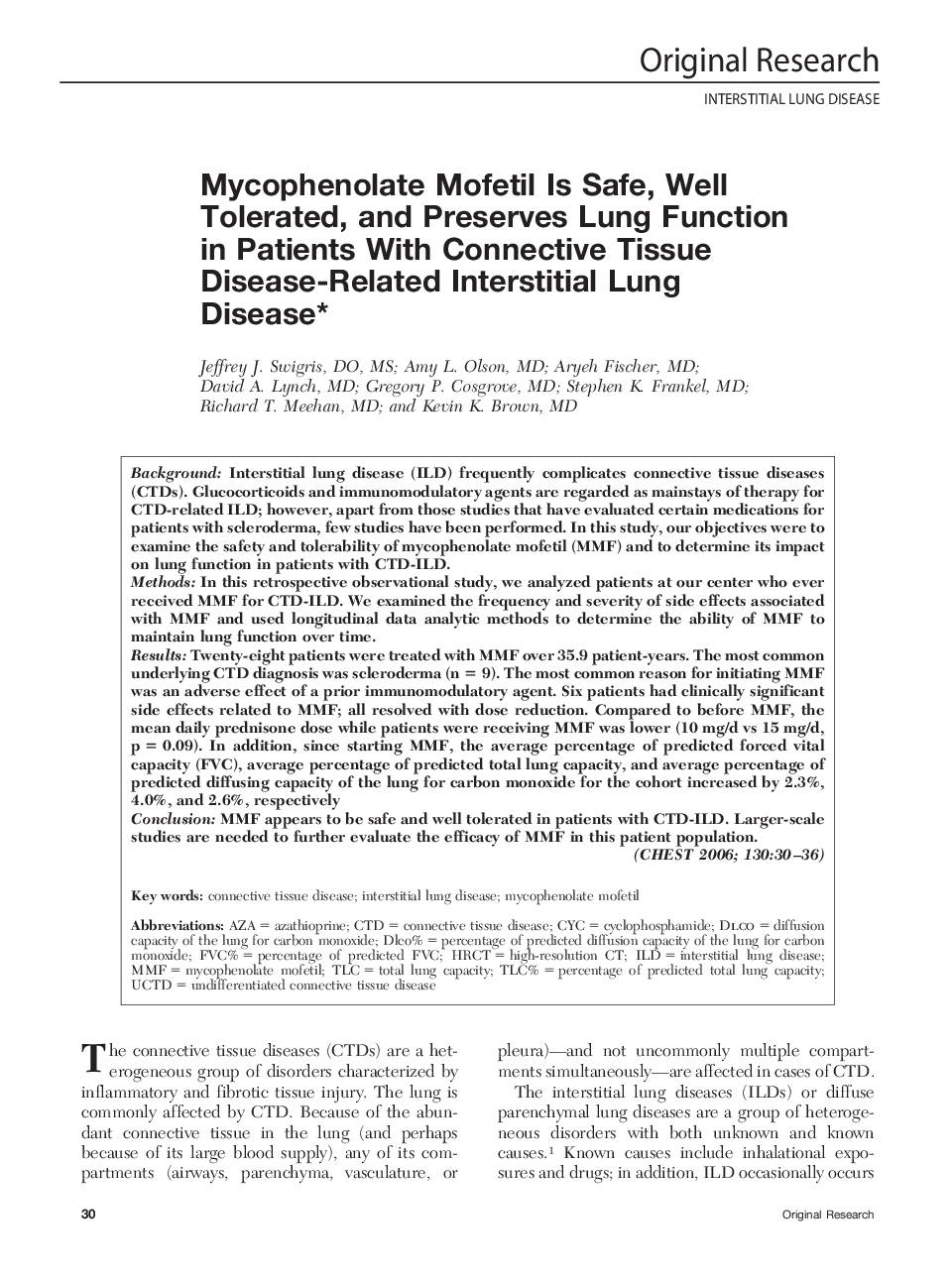| Article ID | Journal | Published Year | Pages | File Type |
|---|---|---|---|---|
| 2905166 | Chest | 2006 | 7 Pages |
BackgroundInterstitial lung disease (ILD) frequently complicates connective tissue diseases (CTDs). Glucocorticoids and immunomodulatory agents are regarded as mainstays of therapy for CTD-related ILD; however, apart from those studies that have evaluated certain medications for patients with scleroderma, few studies have been performed. In this study, our objectives were to examine the safety and tolerability of mycophenolate mofetil (MMF) and to determine its impact on lung function in patients with CTD-ILD.MethodsIn this retrospective observational study, we analyzed patients at our center who ever received MMF for CTD-ILD. We examined the frequency and severity of side effects associated with MMF and used longitudinal data analytic methods to determine the ability of MMF to maintain lung function over time.ResultsTwenty-eight patients were treated with MMF over 35.9 patient-years. The most common underlying CTD diagnosis was scleroderma (n = 9). The most common reason for initiating MMF was an adverse effect of a prior immunomodulatory agent. Six patients had clinically significant side effects related to MMF; all resolved with dose reduction. Compared to before MMF, the mean daily prednisone dose while patients were receiving MMF was lower (10 mg/d vs 15 mg/d, p = 0.09). In addition, since starting MMF, the average percentage of predicted forced vital capacity (FVC), average percentage of predicted total lung capacity, and average percentage of predicted diffusing capacity of the lung for carbon monoxide for the cohort increased by 2.3%, 4.0%, and 2.6%, respectivelyConclusionMMF appears to be safe and well tolerated in patients with CTD-ILD. Larger-scale studies are needed to further evaluate the efficacy of MMF in this patient population.
